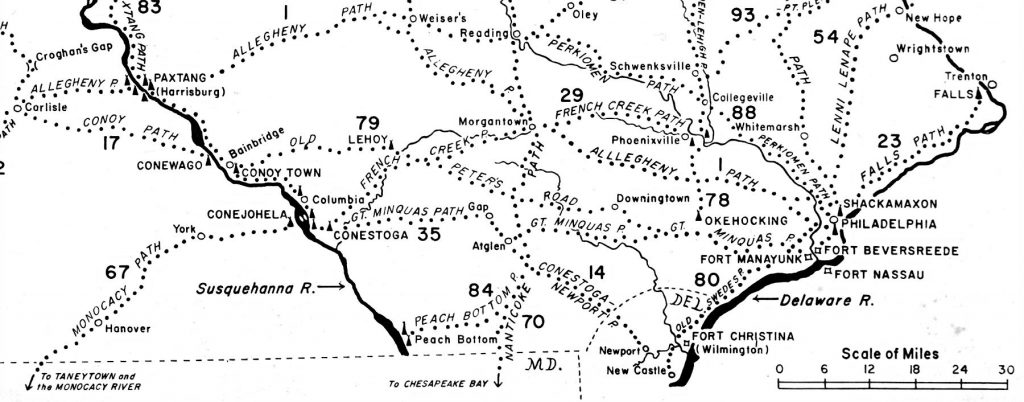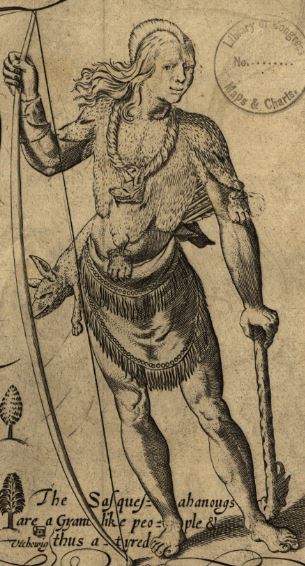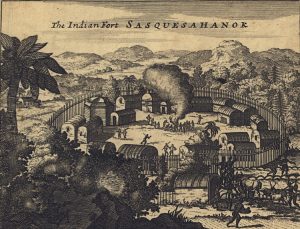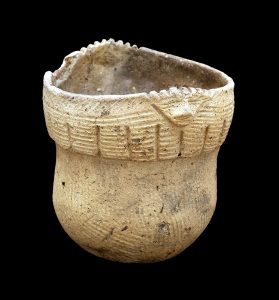Susquehannock Native Landscape
Native Peoples’ Stories Video Project
Susquehanna National Heritage Area contracted Aurora Films to create a series of videos to be displayed at the Zimmerman Center’s Susquehannock Gallery, our new interactive gallery that tells the story of the Susquehannock people. This project was the culmination of 5 years of research and work with the National Park Service and with Susquehannock descendants. The film project includes oral histories, interviews with Susquehannock descendants, a video on contemporary native American gatherings (Lawilowan American Indian Festival), a tour of Native Lands County Park, and a video on archeology and what it can tell us about the Susquehanna’s native people. This video series was funded by grants from the Pennsylvania Department of Conservation and Natural Resources, PA Heritage Areas Program, and the National Park Service Chesapeake Bay Office.
Watch Native Peoples’ Stories Video Series on Youtube
Susquehannock Landscape
Archaeology of the Lower Susquehanna River reveals that American Indians had utilized its resources for thousands of years. Around 1550 AD, the people we know as the Susquehannock moved from higher up the river to the Lower Susquehanna Valley. The Susquehannock were Iroquoian speakers and shared many similarities with the Iroquois in New York. The Shenks Ferry people, who had occupied the region for more than five hundred years prior to their arrival, were absorbed into their culture. Whether this union came about through force or free will is not known.
It is probable that the Susquehannock moved south in order to better control the fur trade. However, they quickly trapped out the Susquehanna valley and became a ‘middle-man’ for furs from Native groups in the areas of New York, Ohio, and Canada. Tensions between tribes over the fur trade were fierce throughout the 17th century.
Susquehannocks traveled to trade with Europeans on footpaths and using their dugout canoes. The Susquehannock’s canoes were heavy and strong. The weight and bulkiness made it extremely difficult to transport the canoes over land. It is likely that dugouts were used primarily for fishing, ferrying cargo, and crossing the river. For travel up or down the river, Susquehannocks used an extensive system of walking paths.


In 1608, Captain John Smith and his small crew of adventurers set out in an open boat to explore the Chesapeake Bay. They mapped and documented nearly 3,000 miles of the Bay and its rivers. Along the way, they visited many thriving Native American communities and gathered information. Smith only traveled up the Susquehanna a few miles, where he met a delegation of Susquehannock representatives just north of the river’s mouth.
Smith described the Susquehannocks “as great and well-proportioned men” who “seemed like Giants to the English.” Based on archaeological evidence, they were no taller than the average modern day American but more robust than Smith’s explorers. Smith’s fascination with the Susquehannock is reflected by the prominent figure of the Susquehannock man included on his map of the Chesapeake Bay.
Susquehannock Culture

The Susquehannock lived in large fortified towns, the largest of which may have had a population of nearly 3,000 people. Their communities were located along the Susquehanna, especially in Cumberland, Dauphin, Lancaster, and York counties. They established their towns along the Susquehanna because of the fertile soil and waters that facilitated travel and trade and provided them with a constant supply fish and waterfowl. Towns were composed of longhouses that were 60 – 80 feet in length and housed a number of nuclear families related through the female line. The stockaded communities were surrounded by large fields of corn, beans, and squash.
The Schultz site is the earliest known Susquehannock town in the lower Susquehanna River Valley. Located just south of Washington Boro, it appears to have been occupied between 1575 and 1600 by as many as 1,300 people. Archaeological evidence from trash and burn pits shows that the Susquehannock had a diverse diet. Corn, beans, and squash were staple foods, with corn-based meals making up nearly half of their diet. Deer was the most common protein but bear, elk, and fish were also popular. Wild plants, fruits, and nuts supplemented their diets.
The Susquehannock were large scale agriculturalists. They practiced ‘slash and burn’ agriculture. This involved clearing the forest by burning down trees and planting crops in their ashes. As nutrients in the soil were depleted, productivity decreased forcing the Susquehannock to move their towns about every two decades.

The Susquehannock created a distinctive vessel known as the Face Pot. The hallmark of this pottery type is its high decorative collar adorned with human faces. Pottery of this form and size were used by the Susquehannock as common food vessels at meal time and as containers to store small personal items such as needles, fish hooks, spoons and other items made of antler, bone and wood. Goods such as glass beads, iron axes, metal harpoons, and flintlock muskets were obtained through fur trade with Europeans. As this trade expanded, native made items were replaced with European equivalents like the brass kettle.
Although the Susquehannock controlled the fur trade for nearly a century, they were in constant conflict with other Indian tribes, especially the Seneca of western New York State. Large scale battles took place with the Seneca in Washington Boro and across the river in York County. Warfare and disease eventually overwhelmed the Susquehannock. In 1675, approximately 500 survivors fled to an abandoned Piscataway fort along the Potomac River. However, this arrangement also ended in disaster, and with permission of the Seneca, they eventually returned to the Lower Susquehanna Valley, establishing a settlement on land set aside for them by William Penn. They became known as the Conestoga Indians and they lived more or less in peace with their European neighbors through the end of the French and Indian War.
A tragic end came to the Conestoga, when two weeks before Christmas, in 1763, they were attacked by a group of vigilantes from the Harrisburg area. Known as the “Paxtang Boys”, the group was upset by the Indian incursions of Pontiac’s Rebellion. The survivors were placed in the Lancaster jail for their own protection but two days after Christmas, the Paxtang Boys returned and killed every man, woman, and child, in what an observer call “the most horrible massacre that was ever heard of in this, or perhaps an other province.”
Susquehanna NHA offers tours from the Zimmerman Center through the historic landscape of the last known settlement of native Susquehannocks.
